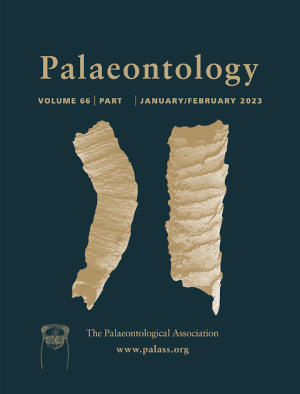Article: The effect of geological biases on our perception of early land plant radiation
Publication: Palaeontology
Volume:
66
Part:
2
Publication Date:
2023
Article number:
e12644
Author(s):
Eliott Capel, Claude Monnet, Christopher J. Cleal, Jinzhuang Xue, Thomas Servais, and Borja Cascales-Miñana
Abstract
Abstract The Silurian–Devonian plant radiation was a critical development in the evolution of early terrestrial ecosystems. Characterizing the diversity dynamics of this radiation has been a focus of numerous studies. However, little is known about the impact of geological bias on our perception of this biodiversification. Here, we use a new, comprehensive compilation of plant occurrences from North America, together with a Macrostrat lithological dataset, to elucidate the relationships between the palaeobotanical and geological records of early land plants. Results show that observed raw diversity patterns at both species and genus rank are significantly correlated with fluctuations of sedimentary rock volume, especially of non-marine fossiliferous deposits. The lack of terrestrial sedimentary deposits before the Emsian (Early Devonian) makes it difficult to obtain an accurate depiction of the pre-Emsian plant diversification in North America. However, complementary analyses reveal that sampling-standardized diversity patterns partially correct the raw trajectories, especially at the genus-level if enough preserved non-marine sediments are available for sampling. Our findings highlight that geological incompleteness remains a fundamental bias for describing early plant diversification. This indicates that, even when sampling is extensive, observed diversity patterns potentially reflect the heterogeneity of the rock record, which blurs our understanding of the early history of land vegetation.
